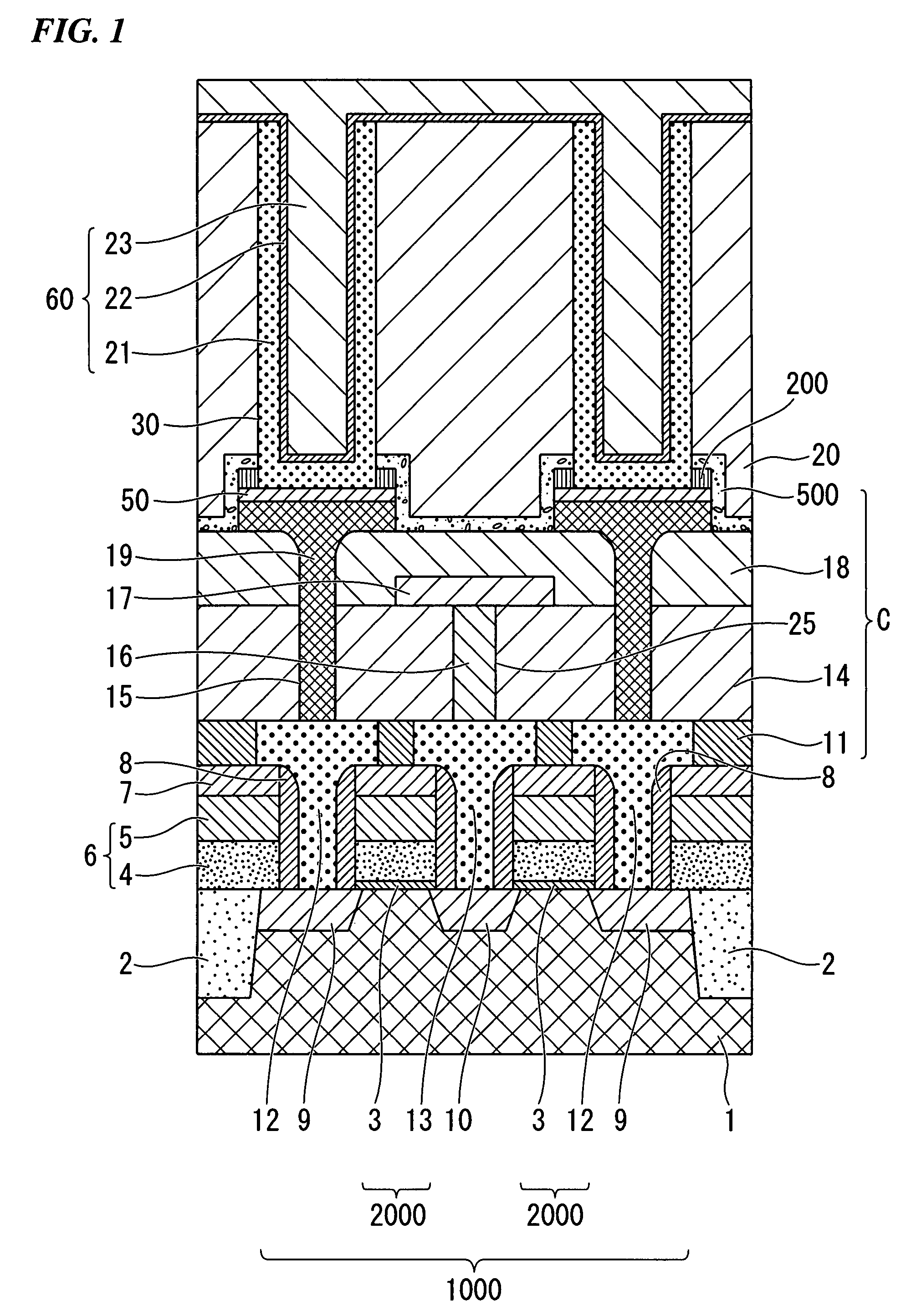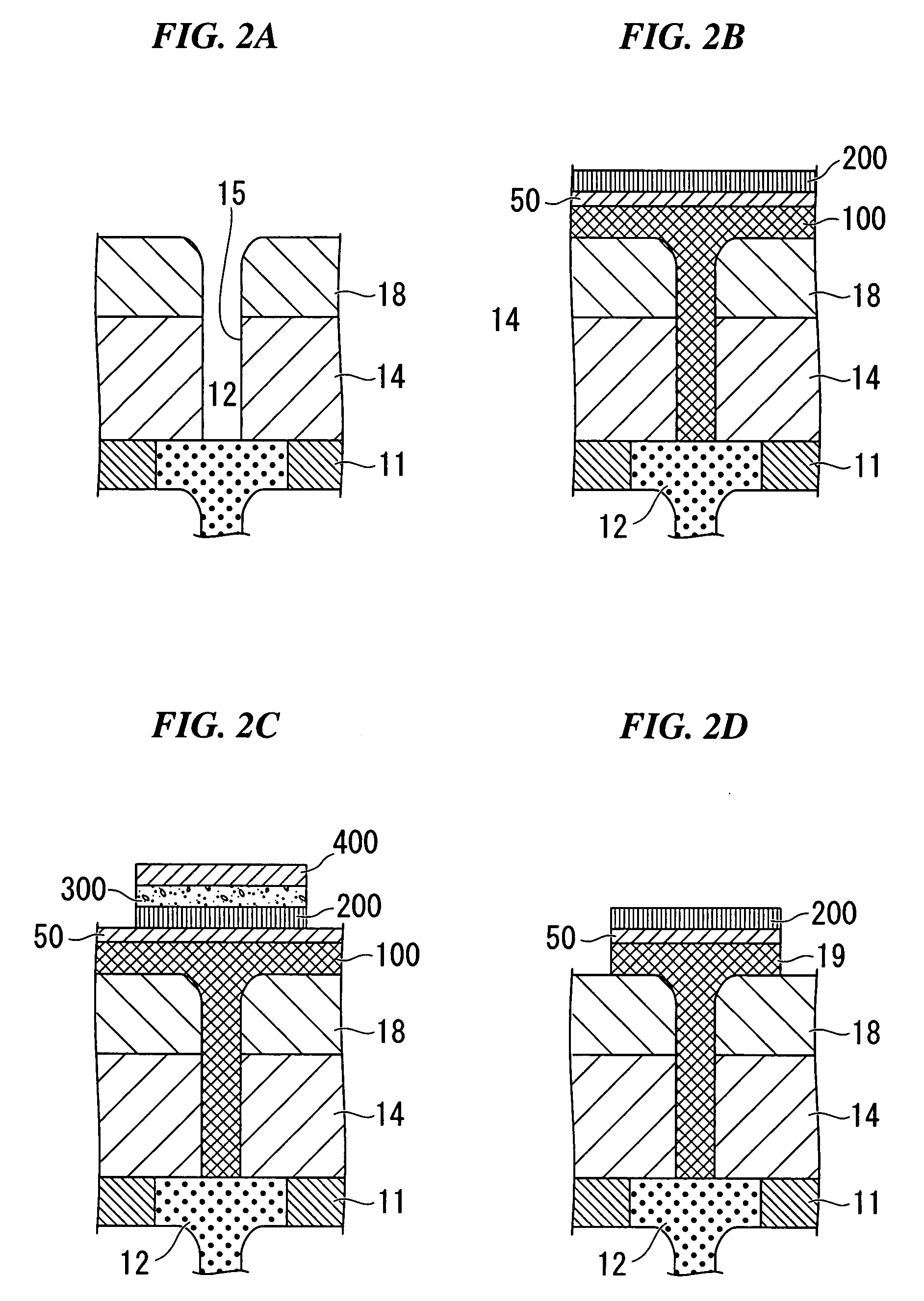Semiconductor device and method of forming the same
a technology of semiconductors and devices, applied in the direction of semiconductor devices, electrical devices, transistors, etc., can solve the problems of reducing the capacity of capacitors, inhibiting the high performance of drams, etc., to prevent the abnormality of silicidation reactions, reduce contact resistance, and large contact area
- Summary
- Abstract
- Description
- Claims
- Application Information
AI Technical Summary
Benefits of technology
Problems solved by technology
Method used
Image
Examples
first embodiment
[0057]A semiconductor device such as a DRAM of this first embodiment will be described with reference to the drawings. FIG. 1 is a fragmentary cross sectional elevation view illustrating a semiconductor device in accordance with a first embodiment of the present invention.
[0058]A semiconductor substrate 1 is made of a semiconductor such as silicon doped with a p-type impurity such as boron.
[0059]A device isolation region 2 is selectively provided in the semiconductor substrate 1. The device isolation region 2 defines or surrounds an active region so called to as a transistor formation region for forming a transistor that selects a memory cell. The device isolation region 2 can be formed by a shallow trench isolation method.
[0060]In the transistor formation region, gate insulating films 3 are provided over the surface of the semiconductor substrate 1. The gate insulating films 3 may be made of silicon oxide. In this case, the gate oxide films 3 can be formed by a thermal oxidation me...
second embodiment
[0122]A semiconductor device such as a DRAM of this second embodiment will be described with reference to the drawings. The second embodiment is different from the first embodiment in the shape of the capacitor contact plug and the fabrication process for the contact plug. The following descriptions will focus on the differences of the second embodiment from the first embodiment. FIGS. 4A through 4D are fragmentary cross sectional elevation views illustrating capacitor contact plugs, in sequential steps involved in a method of forming the DRAM memory cell of the second embodiment.
[0123]Processes resulting in forming the bit line layer 17 are carried out in the same ways as described in the first embodiment. Duplicate descriptions of the same processes will be omitted.
[0124]A plasma enhanced chemical vapor deposition process is carried out to form an inter-layer insulator 18 of silicon oxide over the bit line layer 17 and the inter-layer insulator 14. The inter-layer insulator 18 has...
PUM
 Login to View More
Login to View More Abstract
Description
Claims
Application Information
 Login to View More
Login to View More - R&D
- Intellectual Property
- Life Sciences
- Materials
- Tech Scout
- Unparalleled Data Quality
- Higher Quality Content
- 60% Fewer Hallucinations
Browse by: Latest US Patents, China's latest patents, Technical Efficacy Thesaurus, Application Domain, Technology Topic, Popular Technical Reports.
© 2025 PatSnap. All rights reserved.Legal|Privacy policy|Modern Slavery Act Transparency Statement|Sitemap|About US| Contact US: help@patsnap.com



